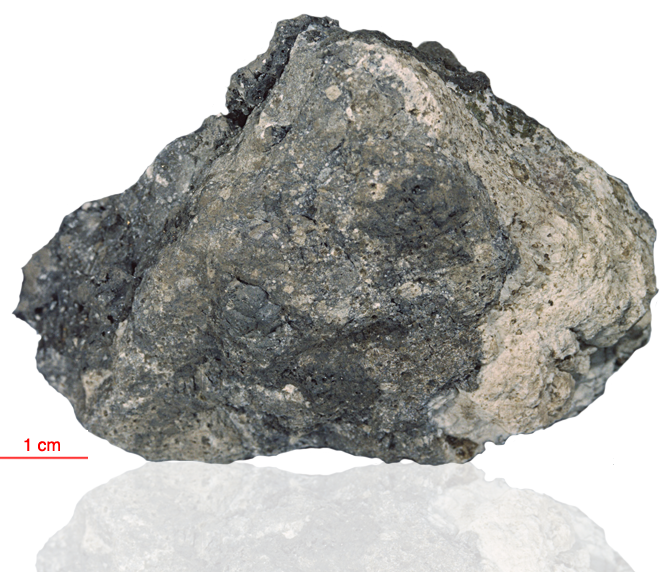
Fact sheet
60639 is a breccia best known for the fragment of mare basalt it contains. However, our thin section samples another clast - a cataclastic anorthosite consisting of intensely shocked plagioclase feldspar. It is almost entirely plagioclase (An96) with minor pyroxene (small crystal in rotation 2). The anorthosite is ferroan.
The sample weighed 175.1 grams before analysis and has not been dated.
Further details of this and other Apollo samples are here: http://curator.jsc.nasa.gov/lunar/
The thin section is thick so between crossed polars some plagioclase crystals are yellow or blue instead of shades of grey.
The Apollo 16 landing site was in the hilly region around Descartes crater in the lunar highlands. The landing spot was chosen to allow the astronauts to gather geologically older lunar material (Descartes Formation and the Cayley Formation) than the samples obtained in the first four landings, which were in or near lunar maria.
The mission lasted 11.1 days, with a stay on the lunar surface of 71 hours. The crew were on the lunar surface for 20.2 hours during which they traversed approximately 27 kilometers and collected approximately 96 kilograms of samples.
Apollo 16 was launched on 16 April 1972.






